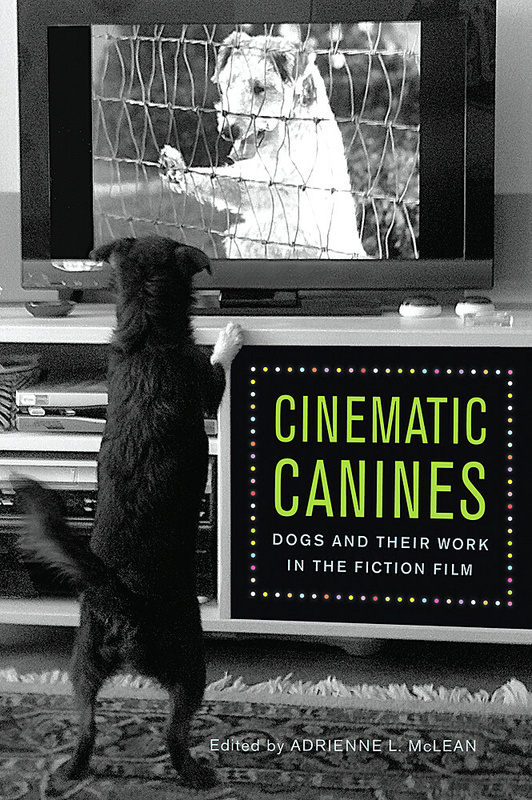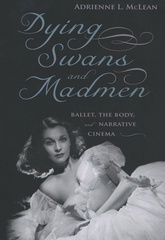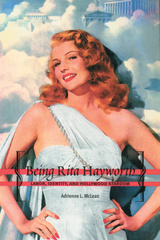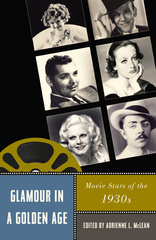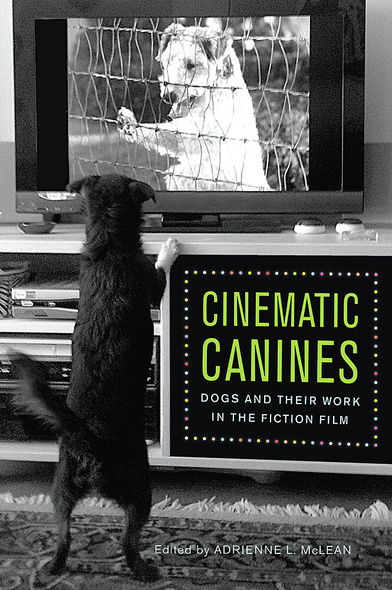
264 pages, 6 1/8 x 9 1/4
56 photographs
Paperback
Release Date:27 Mar 2014
ISBN:9780813563558
Cinematic Canines
Dogs and Their Work in the Fiction Film
Edited by Adrienne L. McLean
Rutgers University Press
Dogs have been part of motion pictures since the movies began. They have been featured onscreen in various capacities, from any number of “man’s best friends” (Rin Tin Tin, Asta, Toto, Lassie, Benji, Uggie, and many, many more) to the psychotic Cujo. The contributors to Cinematic Canines take a close look at Hollywood films and beyond in order to show that the popularity of dogs on the screen cannot be separated from their increasing presence in our lives over the past century.
The representation and visualization of dogs in cinema, as of other animals, has influenced our understanding of what dogs “should” do and be, for us and with us. Adrienne L. McLean expertly shepherds these original essays into a coherent look at “real” dogs in live-action narrative films, from the stars and featured players to the character and supporting actors to those pooches that assumed bit parts or performed as extras. Who were those dogs, how were they trained, what were they made to do, how did they participate as characters in a fictional universe? These are a just a few of the many questions that she and the outstanding group of scholars in this book have addressed.
Often dogs are anthropomorphized in movies in ways that enable them to reason, sympathize, understand and even talk; and our shaping of dogs into furry humans has had profound effects on the lives of dogs off the screen. Certain breeds of dog have risen in popularity following their appearance in commercial film, often to the detriment of the dogs themselves, who rarely correspond to their idealized screen versions. In essence, the contributors in Cinematic Canines help us think about and understand the meanings of the many canines that appear in the movies and, in turn, we want to know more about those dogs due in no small part to the power of the movies themselves.
The representation and visualization of dogs in cinema, as of other animals, has influenced our understanding of what dogs “should” do and be, for us and with us. Adrienne L. McLean expertly shepherds these original essays into a coherent look at “real” dogs in live-action narrative films, from the stars and featured players to the character and supporting actors to those pooches that assumed bit parts or performed as extras. Who were those dogs, how were they trained, what were they made to do, how did they participate as characters in a fictional universe? These are a just a few of the many questions that she and the outstanding group of scholars in this book have addressed.
Often dogs are anthropomorphized in movies in ways that enable them to reason, sympathize, understand and even talk; and our shaping of dogs into furry humans has had profound effects on the lives of dogs off the screen. Certain breeds of dog have risen in popularity following their appearance in commercial film, often to the detriment of the dogs themselves, who rarely correspond to their idealized screen versions. In essence, the contributors in Cinematic Canines help us think about and understand the meanings of the many canines that appear in the movies and, in turn, we want to know more about those dogs due in no small part to the power of the movies themselves.
With obvious affection for their subjects, the authors of the fascinating essays in Cinematic Canines provide a trove of information on famous dogs in the movies and how they have been handled and mishandled by the humans behind the camera.
A book for Fido’s film fans and scholars of animals in motion pictures alike, Cinematic Canines gathers case studies that together make a lively case for considering nonhuman life as essential to media history.
ADRIENNE L. MCLEAN is a professor of film studies at the University of Texas at Dallas. She is the author or editor of many books, including Glamour in a Golden Age: Movie Stars of the 1930s (Rutgers University Press 2010), Dying Swans and Madmen: Ballet, the Body and Narrative Cinema (Rutgers University Press, 2008), and Being Rita Hayworth: Labor, Identity, and Hollywood Stardom (Rutgers University Press, 2004).
Acknowledgments
Introduction: Wonder Dogs
Adrienne L. McLean
Part One. Stars and Featured Players
1. Answering a Growl: Roscoe Arbuckle’s Talented Canine Co-Star, Luke
Joanna E. Rapf
2. The Dogs Who Saved Hollywood: Strongheart and Rin Tin Tin
Kathryn Fuller-Seeley and Jeremy Groskopf
3. Asta the Screwball Dog: Hollywood’s Canine Sidekick
Sara Ross and James Castonguay
4. Promoting Lassie: The Animal Star and Constructions of “Ideal” American Heroism
Kelly Wolf
Part Two. Character and Supporting Actors
5. Dogs at War: Military Dogs in Film
Aaron Skabelund
6. Loaded Dogs: Dogs, Domesticity, and “the Wild” in Australian Cinema
Jane O’Sullivan
7. Bullies and Curs: Overlords and Underdogs in South African Cinema
Giuliana Lund
8. Things from Another World: Dogs, Aliens, and Antarctic Cinema
Elizabeth Leane and Guinevere Narraway
Part Three Stock, Bits, and Extras
9. Hitchcock’s Canine Uncanny
Murray Pomerance
10. The Dog at the Side of the Shot: Incongruous Dog (Canisfamiliaris) Behavior in Film
Alexandra Horowitz
Afterword: Dogs at the Digital Divide
Adrienne L. McLean
Works Cited
Notes on Contributors
Index

